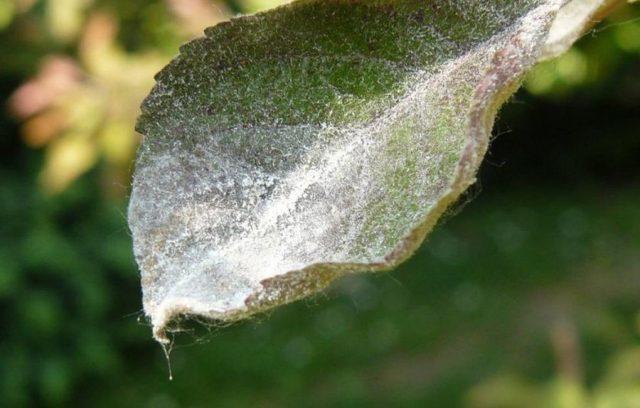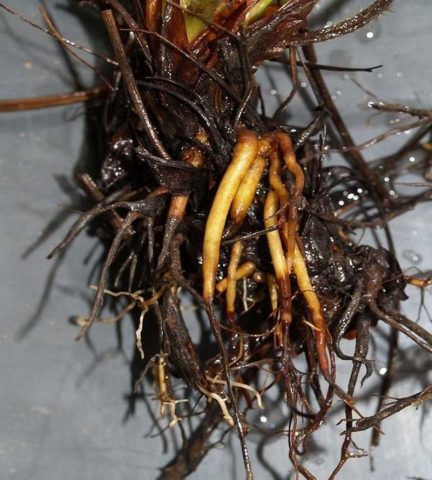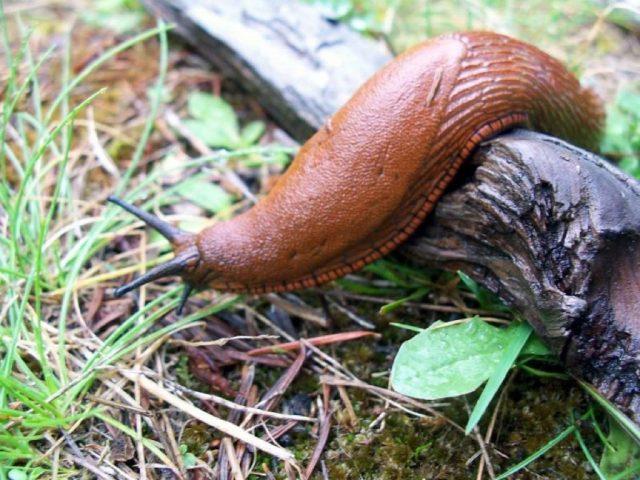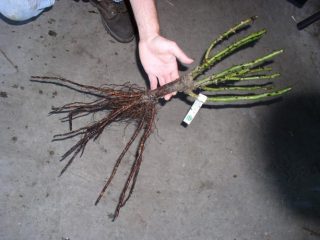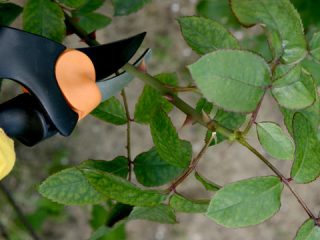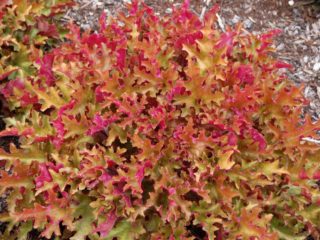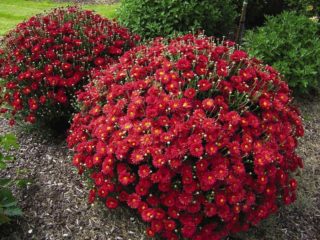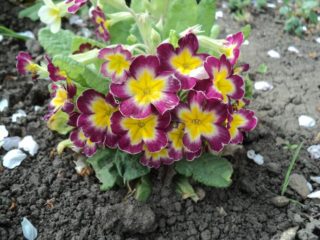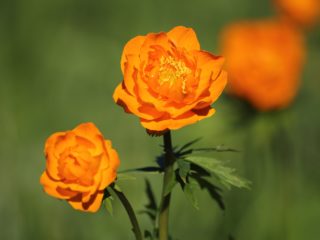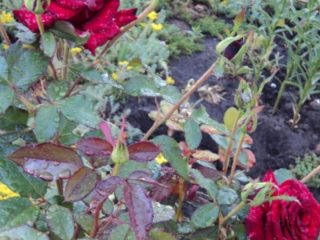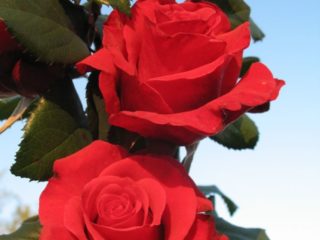Content
The photo and description of eryngium are worth studying to get a complete picture of the beautiful and useful plant. The culture is presented in many types and has modest requirements for care in the open ground.
Description of the perennial plant eryngium
The eryngium in the garden attracts special attention. The herbaceous crop has bright and long-lasting flowering.
What does eryngium look like?
Eryngium, or Eryngium, is a herbaceous plant of the Apiaceae family. It has a straight, bare stem with branches at the top. The leaves of the perennial are entire or pinnately dissected, often spiny-toothed.
The crop has good frost resistance and can withstand cold temperatures down to -25 °C in open ground. The varieties that grow naturally in mountainous areas withstand winter in the middle zone especially well.
Height of eryngium
The height of a perennial crop depends on the variety. Most varieties of the plant reach 20-140 cm above the ground surface. The bushes are quite compact, spreading only up to 60 cm in width.
Where does eryngium grow?
In its natural environment, eryngium grows in subtropical, temperate and tropical climates. It can be found mainly in South America and Mexico, as well as in Northern China and Western Europe. In Russia, eryngium grows mainly in the southern regions. It usually settles in steppes and sandy areas, in thickets of bushes, on calcareous soil in rocks.
When does eryngium bloom
In July, blue or light blue buds bloom at the ends of eryngium shoots, collected in spherical capitate inflorescences up to 3 cm in diameter. The crop is a good honey plant and attracts bees and bumblebees to the garden.
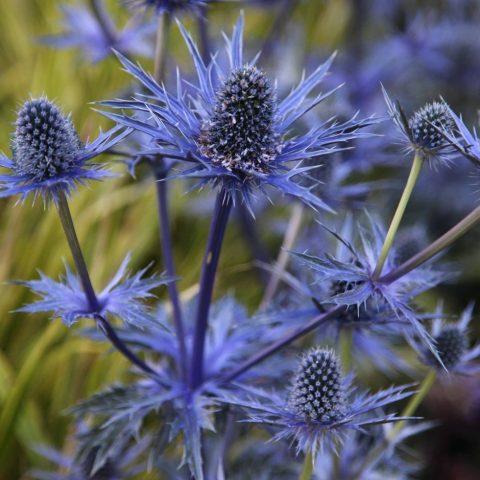
The decorative period of eryngium lasts about 40 days
At the end of the decorative period, the eryngium forms fruits - schizocarp boxes. After falling to the ground under the influence of the wind, they roll away a considerable distance from the plant, scattering numerous seeds.
The benefits and harms of eryngium
Photos and descriptions of flat-leaved eryngium indicate that the plant has high medicinal value. The herb contains a large amount of vitamins and minerals. Infusions and decoctions based on the plant:
- promote expectoration during bronchitis;
- help with diarrhea due to its astringent properties;
- have a mild analgesic effect;
- fight infections and inflammation;
- cleanse the blood and remove waste and toxins from the body;
- strengthen the immune system;
- have a beneficial effect on the nervous system and help to calm down;
- speed up recovery from colds.
When using eryngium-based medications, basic caution must be observed. The plant has some contraindications and can cause harm to the body. It is recommended to avoid infusions and decoctions:
- with poor blood clotting;
- for individual allergies;
- for hypertension;
- for gastric ulcers;
- with pancreatitis;
- during pregnancy and during feeding;
- with glaucoma and increased intracranial pressure.
Women should stop taking the plant during menstruation.
Types and varieties of eryngium
Photos of eryngium in a flowerbed show that the culture comes in many varieties. There are several plants popular among gardeners.
Alpine eryngium
Alpine eryngium (Eryngium alpinum) is naturally distributed in the mountainous regions of France, Yugoslavia and the central regions of Russia. It has erect ribbed shoots up to 70 cm above the ground. The basal leaves of the plant are heart-shaped with serrated edges, while the stem leaves are wedge-shaped.
In the photo of the Alpine eryngium it is noticeable that in mid-summer it blooms with blue buds collected in dense oblong inflorescences. Closer to autumn it bears fruit - obovate two-seeded seeds.
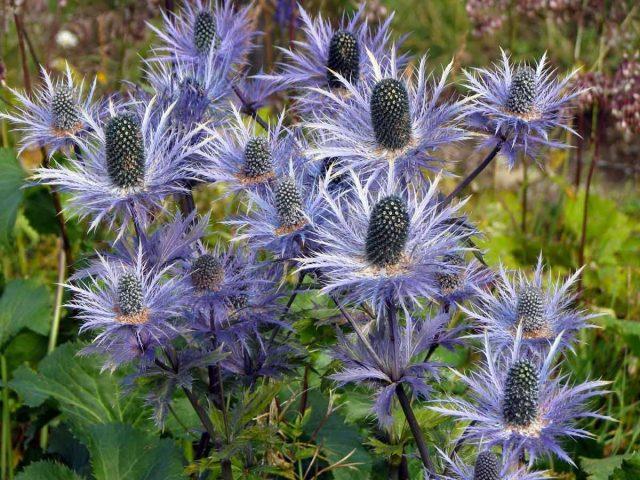
Alpine eryngium has been in cultivation since the 16th century
Flat-leaved eryngium
Eryngium planum is common in Western Siberia, Northern China and Central Asia. Reaches 1 m above the ground, the stems of the plant are branched and bluish in color. The leaves are thin and tough, with a leathery surface. In July, the crop bears blue or dark blue buds, collected in egg-shaped heads up to 2 cm in diameter.
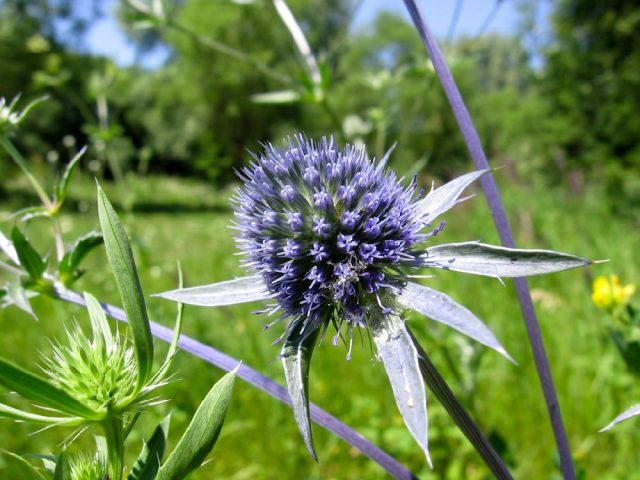
Flat-leaved eryngium begins to bloom from the second year after planting
Seaside eryngium
Primorsky eryngium (Eryngium maritimum) grows wild in the Caucasus, Crimea, as well as in the Baltic states and Western Europe. It has bluish-blue branched stems and round, prickly-toothed leaves. The buds are pale blue, united in spherical inflorescences.
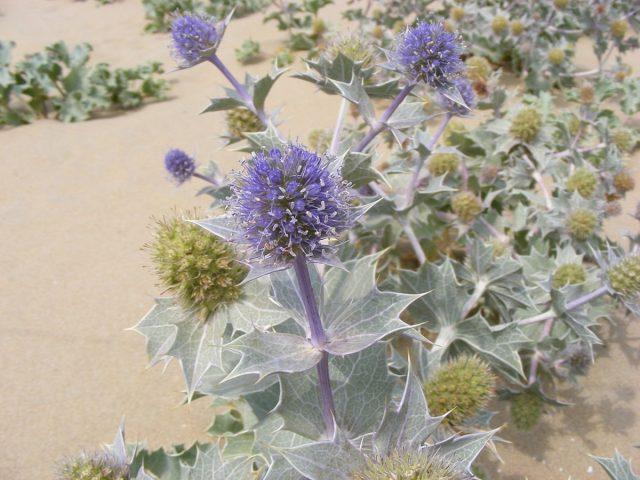
Primorsky eryngium reaches 70 cm above the ground
Giant eryngium
The giant eryngium (Eryngium giganteum) differs from other species in its particularly large buds. The color of the flowers is first silvery, then becomes deep blue. The decorative period of the plant lasts from July to September.
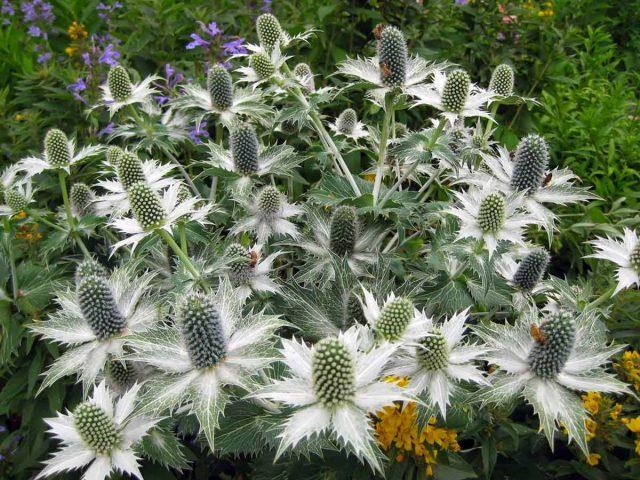
Giant eryngium has good frost resistance, but its life cycle is two years
Amethyst eryngium
Amethyst eryngium (Eryngium amethystinum) grows up to 70 cm above the ground. It has leathery, spiny leaves, pinnately divided in structure. It blooms with blue or dark blue buds, collected in fairly large inflorescences up to 3 cm. The decorative period begins in July and lasts about one and a half months.
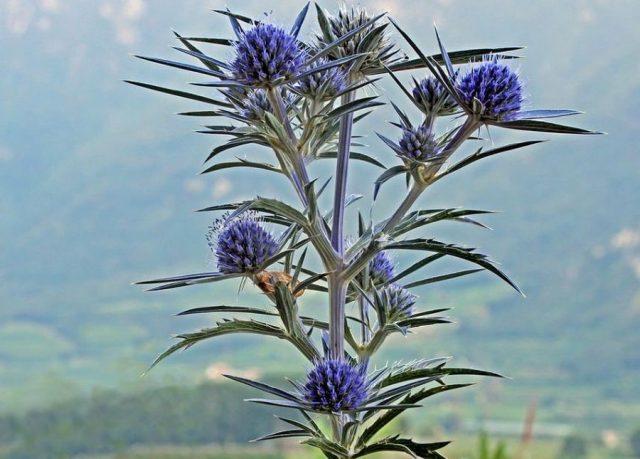
Amethyst eryngium can be found in the countries of Southern and Central Europe
Field eryngium (plain)
Field eryngium (Eryngium campestre) has strongly dissected basal plates.A single straight stem of the plant rises up to 60 cm above the ground. In summer, the variety blooms with capitate umbrellas collected in corymbose inflorescences. The buds of eryngium are bluish, sometimes almost white.
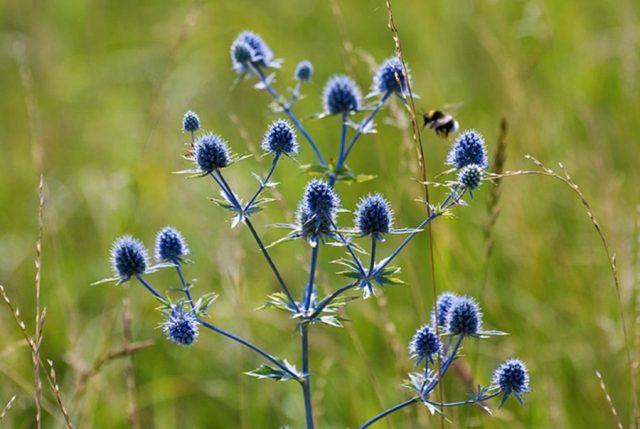
Steppe eryngium is widespread in Asia Minor, North Africa and the North Caucasus
Landing rules
Planting eryngium and caring for it in open ground is not associated with significant difficulties, but requires attention from the gardener. On the site for the plant, you need to find a sunny and warm place with a well-drained, dry substrate. The crop can be planted on sandy and rocky soil with poor composition. Eryngium does not like fertile heavy soil and does not develop well on it. The soil should be neutral or slightly calcareous; eryngium should not be planted on acidic soil.
The location for the eryngium should be chosen with special attention. The culture does not like transplantation, so it is better to place it immediately on a permanent site. Rooting is carried out in early spring after the snow melts or in the fall until mid-October.
You can plant eryngium in the garden according to the following algorithm:
- The selected area is dug 20 cm deep.
- All weeds are removed and sand, humus and complex minerals are added to the soil.
- Dig a hole that is approximately twice the size of the plant's roots.
- A drainage layer is poured onto the bottom of the recess, and the substrate is placed on top.
- Place the eryngium in the center of the hole and fill the remaining voids with soil.
- Water the plant abundantly.
Between individual seedlings it is necessary to leave 50-70 cm of free space.
Care instructions
After planting the eryngium on the site, it is necessary to provide the plant with basic care. It comes down to several events:
- Watering. Eringium is a drought-resistant crop and does not like excessive moisture. Shrubs need to be watered only during periods of prolonged absence of precipitation. Use warm and well-settled water; it should be added to the soil in small quantities.
- Feeding. The eryngium prefers poor soils, so organic matter is not used for fertilizer when growing the crop. A couple of times a season you can feed the bushes with phosphorus and potassium.
- Garter. Tall varieties of eryngium can droop and break due to gusts of strong wind. When growing crops in an open area, it is recommended to secure the stems on supports.
With the onset of autumn, sanitary pruning should be carried out for the eryngium and dry and diseased shoots should be removed. During flowering, it is also worth plucking off faded buds in a timely manner to stimulate the appearance of new ones.
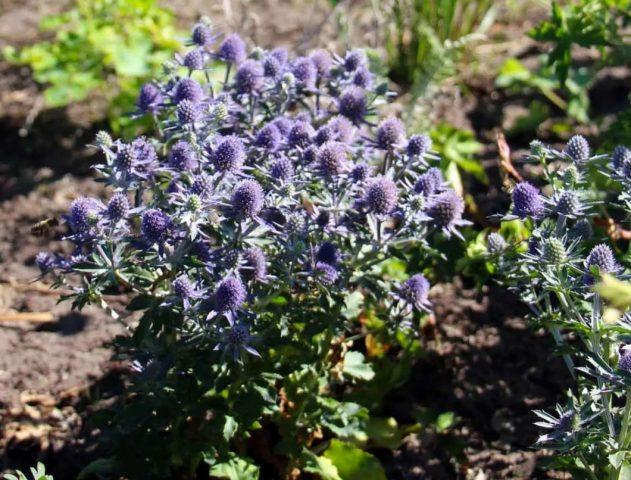
After watering and rain, it is recommended to loosen the soil in the area with eryngium to a shallow depth with a rake.
Diseases and pests
The properties of flat-leaved eryngium protect the crop from most fungi and insects. But if care is not taken care of, the shrub can suffer from some diseases. In particular, the following are dangerous for him:
- powdery mildew - a whitish coating appears on the leaves of the plant, which darkens and thickens over time;
Powdery mildew harms eryngium in cold, damp summers
- root rot - the crop stops growing, the shoots turn black at the base, soften and lie down;
Eryngium roots begin to rot from excess moisture
- slugs - gastropods eat the lower leaves of the crop in wet weather.
Mulching the plant with sawdust, pine needles or wood chips helps against slugs on eryngium.
When fungal symptoms appear, it is recommended to spray the eryngium with colloidal sulfur or copper sulfate. Prevention of the disease is ensured by moderate watering without waterlogging the soil. Insects rarely infect crops, but when they appear, you can use a soap solution, as well as the preparations Aktara and Iskra.
Reproduction of eryngium
You can propagate eryngium on your site either by seeds or by vegetative methods. Two methods are popular among gardeners.
Growing eryngium from seeds at home
Sowing of eryngium with seeds for seedlings is carried out in early March. For the culture, select a shallow but wide pot and a substrate from a mixture of garden soil and sand. The seeds are first placed in the refrigerator for a month to ensure high-quality stratification.
The container and substrate are disinfected with boiling water to remove bacteria. After this, the soil is poured into a pot and the seeds are spread over its surface. The planting material is covered with a thin layer of soil on top and sprayed with warm water.
To grow eryngium from seeds at home, the container should be kept in a bright place at a temperature of about 25 ° C under film. After sprouts form, open the container and move it to the windowsill. Caring for seedlings in the room comes down to periodic watering; at the end of spring, the seedlings are transferred to open ground.
Root cuttings
Eryngium can be propagated on site using root cuttings.In mid-autumn, the shrub is carefully dug out of the ground and several thick shoots about 1 cm in diameter are cut off from the underground part.
After this, the plant is placed back into the soil, and the root cuttings are washed and treated with a growth stimulator. Then the shoots are planted in a closed pot in a substrate consisting of soil, compost and sand. The tops of the cuttings are slightly buried in the soil.
Throughout the winter, pots with root shoots are kept in an unheated, bright room. In the spring, the cuttings will sprout, and at the beginning of summer they can be transplanted into open ground.
Photo of eryngium in landscape design
Gardeners value not only the medicinal properties of the eryngium plant, but also its decorative qualities. Eringium is most often planted in rocky gardens - the shrub takes root well on dry, poor soil in the presence of sufficient sunlight.
You can combine perennials in the garden with other drought-resistant crops. In particular, good neighbors for the plant are phlox and young, sedum and sage, feather grass and centranthus. The shrub looks especially impressive next to perennials with silver and bluish leaves.
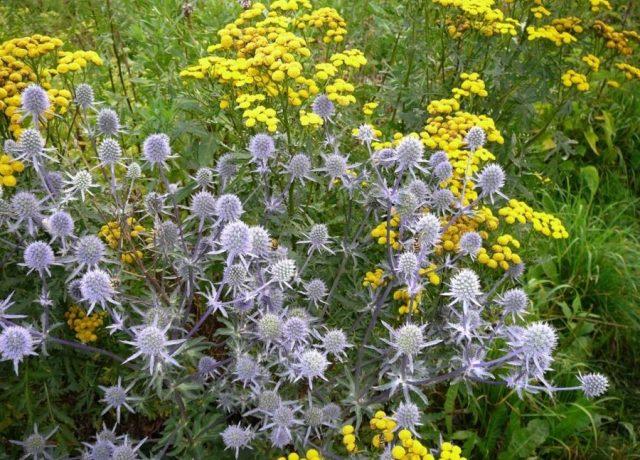
Eryngium can be used as a backdrop for colorful flowering perennials
Conclusion
Photos and descriptions of eryngium deserve careful study. The drought-resistant crop takes root well on rocky, poor soils and does not require complex care.
Reviews of eryngium
